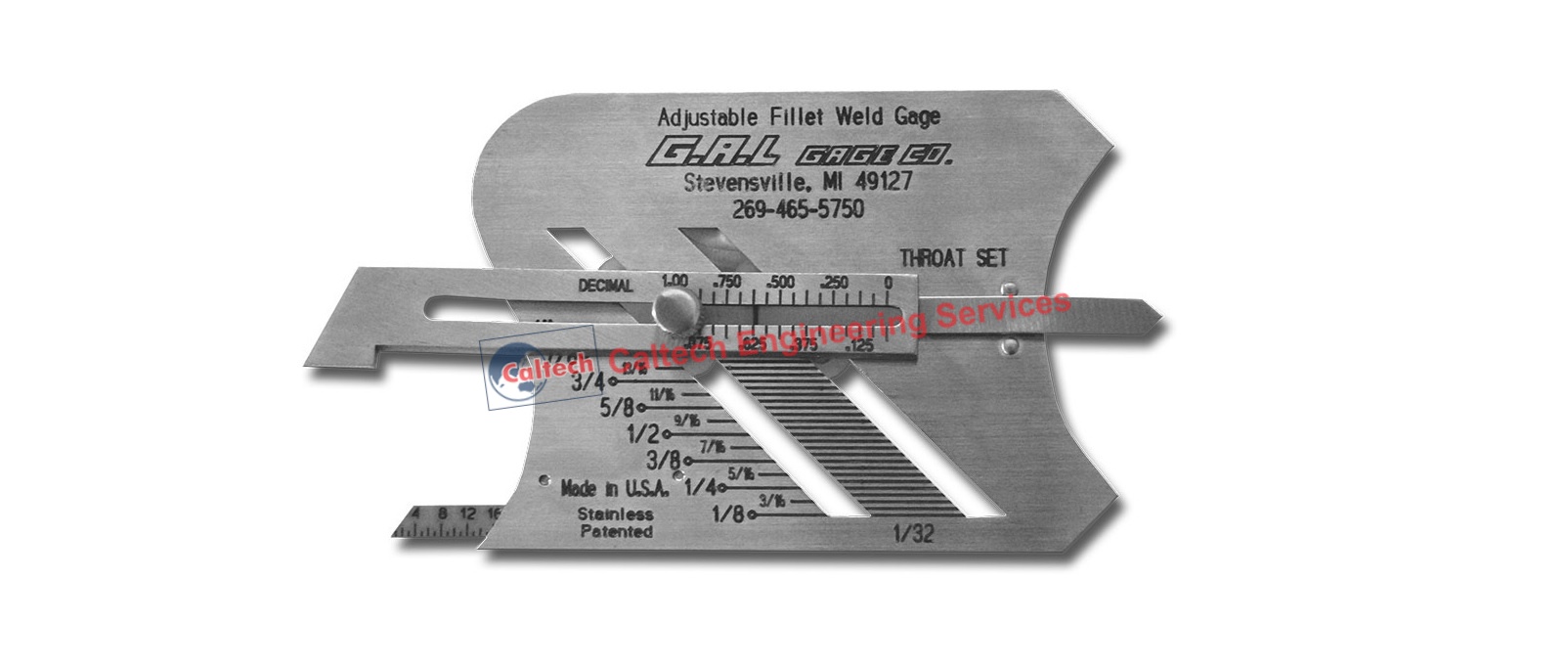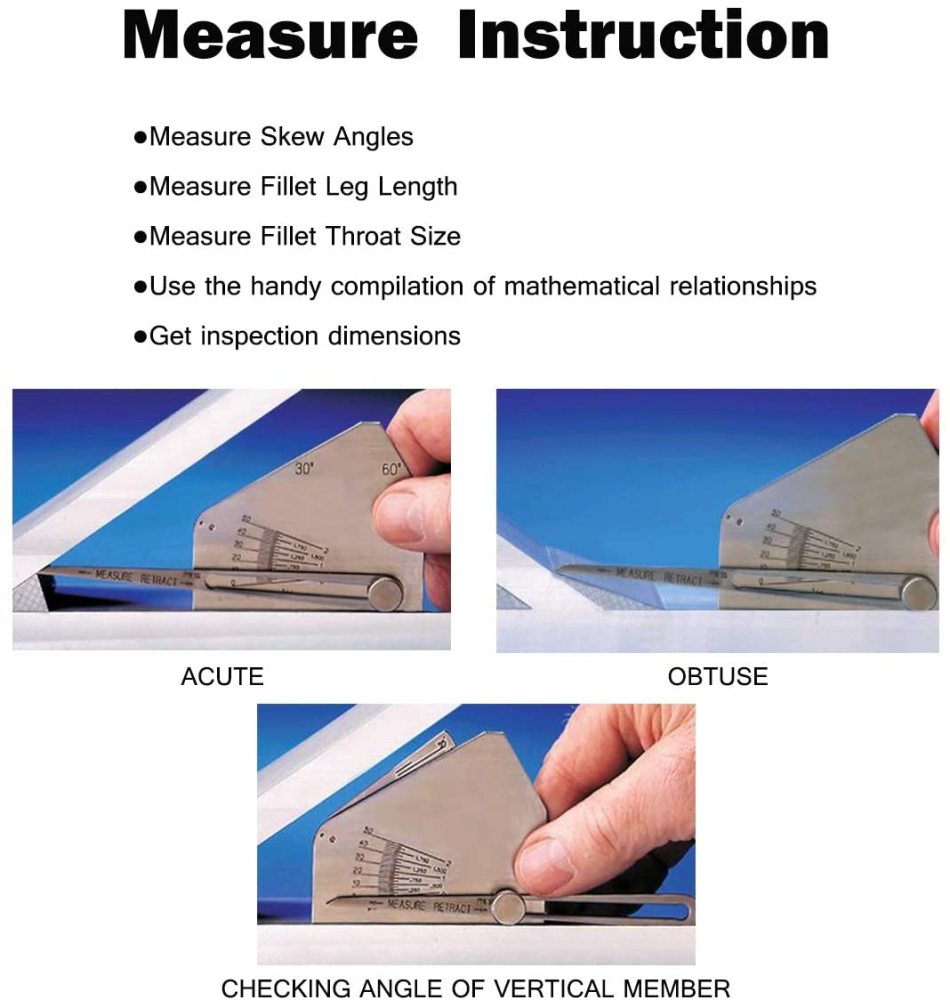Gauge Fillet Weld Fundamentals: Ideal Practices and Common Mistakes
Gauge Fillet Weld Fundamentals: Ideal Practices and Common Mistakes
Blog Article
The Ultimate Guide to Fillet Weld High Quality Control: Ensuring Toughness and Toughness in Your Welded Joints
In the realm of welding, ensuring the toughness and sturdiness of fillet welds is paramount for the honesty of welded joints. The quality assurance steps implemented throughout the welding process can substantially impact the architectural stability of the end product. From the choice of appropriate products to the meticulous assessment of welds, each step plays a vital role in establishing the overall high quality of the weld joint. As we embark on this expedition of fillet weld quality assurance, we will certainly reveal important variables that influence weld stamina, dive into efficient examination techniques, and go over strategies for stopping usual weld defects. Remain tuned to find just how mastering these methods can boost the resilience and dependability of your bonded joints.
Relevance of Fillet Weld Top Quality Control
Ensuring proper fillet weld quality assurance is critical in assuring the architectural honesty and long life of bonded elements in different markets. Fillet welds are typically utilized in architectural steelwork, bridges, stress vessels, pipes, and various other important facilities where the stamina of the weld is important to general safety and efficiency. Quality assurance actions such as aesthetic examinations, non-destructive screening, and adherence to welding procedures help recognize potential flaws like lack of fusion, incomplete penetration, undercutting, or too much reinforcement.
Trick Elements Affecting Weld Stamina
Achieving optimal weld toughness needs mindful consideration of numerous crucial factors that affect the integrity and longevity of the welded joint. The first vital element appertains joint preparation, which entails cleaning the base steels to get rid of any type of impurities that could deteriorate the weld. Additionally, the fit-up of the joint is crucial to guarantee correct penetration and combination of the filler product.
The selection of the proper welding strategy and parameters likewise plays a substantial function in establishing weld stamina. Aspects such as warmth input, traveling rate, and electrode angle can impact the top quality of the weld. Preserving the proper interpass temperature level throughout multi-pass welding is crucial to stop cracking and guarantee a strong bond between the layers.
Moreover, the selection of filler product and its compatibility with the base steels is crucial for achieving high weld stamina. Utilizing filler product with the appropriate mechanical residential properties can boost the total honesty of the weld. Post-weld warmth therapy and correct assessment methods are necessary steps in guaranteeing the strength and resilience of the welded joint.
Inspection Approaches for Weld Honesty

One more vital examination technique is fluid penetrant screening, where a fluid color is used to the weld surface area - Gauge Fillet Weld. The color seeps into any surface-breaking defects, making them visible under UV light. This technique is efficient for identifying flaws that may not be visible to the nude eye


Ultrasonic testing is additionally commonly used for evaluating weld integrity. High-frequency acoustic wave are routed right into the weld, and any type of disruptions in the acoustic wave pattern show possible issues like cracks or lack of combination.
These examination approaches play a vital role in making sure the quality and reliability of welds, eventually adding to the total toughness and durability of bonded joints in industrial setups.
Stopping Typical Weld Defects
In order to keep the structural integrity of bonded joints in industrial applications, it is important to implement safety nets to resolve typical weld defects. One usual problem is absence of fusion, where the filler product fails to bond appropriately with the base steels, resulting in weak places in the weld. This can be stopped by making sure appropriate heat control and making use of the appropriate welding strategy.
Another frequent concern is porosity, triggered by gas entrapment in the weld metal throughout the welding procedure. To avoid this, it is vital to clean the base metals thoroughly, utilize completely dry electrodes, and keep a suitable welding atmosphere with proper air flow.
In addition, splits in welds can compromise the joint's toughness. To avoid this problem, it is necessary to regulate the cooling price after welding, use pre-heating when necessary, and choose appropriate welding criteria.
Enhancing Bonded Durability With Proper Methods
One important method to boost weld sturdiness is to ensure correct weld bead positioning. By positioning the weld grain accurately within the joint, the weld's toughness and resistance to fatigue can be dramatically improved.
In addition, employing proper pre-weld and post-weld heat therapies can help minimize recurring anxieties and improve the weld's durability, making it more why not try this out resistant to fracturing and failure gradually. Another method to boost weld longevity is to use premium welding consumables and base materials. Choosing the ideal filler steel and guaranteeing the cleanliness of the base steels can protect against inclusions and other defects that could jeopardize the weld's toughness. By implementing these appropriate strategies, welders can ensure that their welded joints display phenomenal strength and toughness, meeting the greatest high quality criteria.
Final Thought
Finally, preserving top quality control standards for fillet welds is vital for making certain the toughness and toughness of bonded joints. By comprehending the essential factors affecting weld toughness, using evaluation methods for weld honesty, protecting against typical weld problems, and employing correct techniques, welders can boost the general sturdiness of their welds. It is crucial to prioritize quality assurance actions to create Check Out Your URL dependable and long-lasting welded joints.
In the world of welding, guaranteeing the toughness and sturdiness of fillet welds is paramount for the stability of welded joints. As we embark on this expedition of fillet weld quality control, we will certainly uncover crucial aspects that influence weld stamina, delve into reliable assessment approaches, and talk about strategies for protecting against typical weld issues.Achieving optimum weld strength needs mindful consideration of numerous key aspects that affect the integrity and longevity of the welded joint (Gauge Fillet Weld).In final thought, keeping high top quality control criteria for fillet welds is essential for making sure the stamina and longevity of welded joints. By comprehending the vital factors impacting weld toughness, making use of Read More Here inspection techniques for weld stability, protecting against common weld defects, and utilizing appropriate strategies, welders can boost the overall sturdiness of their welds
Report this page